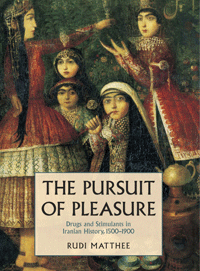 Common interests Common interests
This time, Iranian men find themselves to have common interests with women against the system which does not hesitate to undermine anything pertaining to human values, in the name of religion
Sohrab Ferdows
March 8, 2006
iranian.com unedited
March 8th every year is marked by women groups all over the world as universal women's day in order to bring in focus the centuries old struggle of women for equal rights in the society. This struggle has taken different formats at different times according to culture of different societies. In our country where culture has been extremely influenced by Shiite religious values for past few centuries, this issue became a serious matter for clergies who considered it an important element in their domain. In a society where people considered all kinds of atrocities permissible to defend their own sectarian values against others, any attempt in direction of equalizing men and women rights would face serious resistance led by clergy.
During reign of Ghajar dynasty in Iran, influence of clergy had spread into every affair and in every remote corner of society and had a very strong grip on people's behavior in their day to day life. Clergy's instructions backed by a variety of religious stories (hadith), was the main source for decision making from birth to death and women's status in the family and society was strongly affected by these decisions in a negative way. Even though women of royal families during later Ghajar era were enjoying some freedoms, Iranian women's rights were completely suppressed by male dominated society with support of religious directives.
 Coming of Reza Shah Pahlavi and start of reform policies in direction of modernizing the country required introducing and sharing of progressive values and liberties with suppressed half of society. It started with removal of hejab (chador) which was the most visible symbol of women's restricted rights in the society and was extended to men's outfit in order to shake the society and prepare it for hard work ahead. Removal of hejab was received very cautiously by higher class of society in which women had very limited activities for their rights. Later on, it became a symbol of authority for new system which needed to work faster to implement modernization of the country and, government started to enforce this policy with the help of police and army. Coming of Reza Shah Pahlavi and start of reform policies in direction of modernizing the country required introducing and sharing of progressive values and liberties with suppressed half of society. It started with removal of hejab (chador) which was the most visible symbol of women's restricted rights in the society and was extended to men's outfit in order to shake the society and prepare it for hard work ahead. Removal of hejab was received very cautiously by higher class of society in which women had very limited activities for their rights. Later on, it became a symbol of authority for new system which needed to work faster to implement modernization of the country and, government started to enforce this policy with the help of police and army.
The backlash to this event was great and forced the government to take stronger measures in order to encourage those who timidly followed new policies as pioneers of new social order. Iranian society, under influence of clergy, paid a heavy price to open the way to extend the liberties to women and it was just a start. Iranian women who never had a chance to explore the sweetness of freedom with all the restrictions imposed on them under religious codes, started to realize its values and implications. More activities in social affairs culminated in flourishing of new talents which had been taken away from society previously.
Availability of public and mandatory education to females in our society further helped in motivating Iranian women to become more demanding and active for their rights. All of this was not pleasant to clergy who considered it in violation of their divine rights but, that never stopped the society of moving forward. Later, during the reign of Mohammad Reza Shah, a bill to reform the society in different areas was introduced and put to referendum to include Iranian women in more serious affairs of society. The reaction to this matter led by an unknown clergy at the time, Khomeini was extremely violent.
Ratification of the bill through referendum by a big majority of Iranian society, provided the grounds for further developments and Iranian women gained their right to vote and to be an elected official. This bill which also included land reform caused a lot of fury by some mullahs who felt their divine rights were being undermined by government. Khomeini openly denounced the bill and specifically mentioned that the right to vote by Iranian women was in contradiction with Islamic codes and values. Some clashes between followers of Khomeini and government forces occurred in different towns and result was a number of killed and injured. Khomeini was arrested and, with some help from the head of savak at that time and some religious leaders, a compromise was made by government on his punishment and he was sent to live in exile.
 Return of Khomeini to Iran in 1979 while a huge blessing for some mullahs, culminated into an enormous disaster for all Iranian people. Iranian women were quickly forced back under hejab and other formats of covering as an indication for return of religious codes to a society which was getting ready to accept its new status as a secular and modern nation. Khomeini who had backtracked from his initial denunciation of women's right to vote, in the process of campaign against previous regime in order to show his support for modernity, started enforcing his divine mission and this, included stripping women out of their equal rights. Iranian women, along with the rest of society, were dragged back against the direction of history in order to protect the nation from moral corruption which clergy considered most important part of their mission. Return of Khomeini to Iran in 1979 while a huge blessing for some mullahs, culminated into an enormous disaster for all Iranian people. Iranian women were quickly forced back under hejab and other formats of covering as an indication for return of religious codes to a society which was getting ready to accept its new status as a secular and modern nation. Khomeini who had backtracked from his initial denunciation of women's right to vote, in the process of campaign against previous regime in order to show his support for modernity, started enforcing his divine mission and this, included stripping women out of their equal rights. Iranian women, along with the rest of society, were dragged back against the direction of history in order to protect the nation from moral corruption which clergy considered most important part of their mission.
Today, Iranian woman, while still present in parliament in chador, and while still allowed to have a driver's license, is no more than woman during Ghajar era as far as social values. Moral corruption has become a widespread epidemical issue as a result of backward policies towards the society and, also as a result of deep and serious corruptions in the ruling class. It is under this extremely hostile system that Iranian women have to continue the struggle for their rights.
This time, Iranian men find themselves to have common interests with women against the system which does not hesitate to undermine anything pertaining to human values, in the name of religion. Struggle for women's rights in Iran, in fact, is not separate from struggle for basic human rights that have been denied to our nation by theocratic system. Solution is nothing but fundamental change in how the society is run and Iranian men and women have no choice but to work hand in hand to resolve the biggest challenge that our nation has faced in modern times.
|